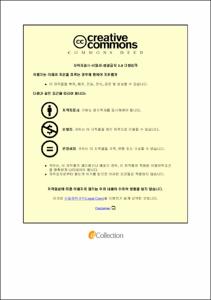이하라 사이카쿠(井原西鶴)와 히구치 이치요(樋口一葉) 문학의 ‘女性’에 관한 연구
- Abstract
- In Japanese literature, ‘onna’ indicates female who lives in the circumstance in which they can’t choose the ‘love’ independently.
The purpose of this study is to identify the flow that ‘onna’ becomes ‘women’ in Japanese literature, especially novel.
For this study, works of Saikaku Ihara in the early modern and Ichiyo Higuchi in modern history were examined and compared on each other.
To clear understanding, this study identifies the concept of female from Edo period to new women claimed by Seito in 1910, especially the concept of female which is established in modern times.
The reminders are organized as follows:
In part 1, it is examined the relationship between Japanese early modern literature and ‘onna’ through the representative works in the early and the late period. gana-zoshi and ukiyo-zoshi are representative works in the early modern literature. Also, share-bon, kokkei-bon, and ninjo-bon are representative works in the late period literature.
In part 2, it is identified the meaning of the ‘kosyoku’ in works of Saikaku and studied the process how man and woman fall in ‘love’ and the result of the story by types.
In part 3, it is considered ‘onna’ Saikaku wrote focusing on the heroine of .
In part 4, it is examined Saikaku and Ichiyo’s works based on ‘onna’ and ‘women’ in Confucian environment.
In part 5, it is considered the female in Ichiyo’s works: and the process that heroines get the ego by degrees.
Characters in works of Saikaku and Ichiyo can’t date freely or ‘love’ in the Confucian system. Even considering the difference of sex between two writers, Ichiyo described woman loves passively and ended the story as a tragic. On the other hand, in Saikaku’s works, the ‘love’ of ‘onna’ was active and independent except the male’s sight.
It is adapted to early works of Ichiyo in Meiji period that woman doesn’t live independently in the feudal system before modern times. However it was available to look into the process that woman identify themselves not in works of Saikaku but Ichiyo’s. Most of ‘onna’ in Saikaku’s works couldn’t escape from the fetters of love affair and faced tragic ending even though they showed enthusiastic attitude about ‘love’. In Ichiyo’s works, women not only fail the ‘love’ and happy ending but also tried to get ego as an individual
The contribution of this study is to research female in the Japanese literatures comparing early modern and modern times. Before this study, there have been needs for the research of comparative study about literature in Edo period and Japanese modern literature. However, previous works are not enough to meet with these needs, especially the study about ‘onna’ that is common object described by Saikaku and Ichiyo. Therefore, this study is meaningful to indentify the flow that ‘onna’ becomes to ‘woman’ in the literature.
- Issued Date
- 2016
- Awarded Date
- 2016. 2
- Type
- Dissertation
- Publisher
- 부경대학교 대학원
- Affiliation
- 부경대학교 대학원
- Department
- 대학원 일어일문학과
- Advisor
- 김상규
- Table Of Contents
- * Abstract
Ⅰ. 서론 1
1. 연구목적 1
2. 선행연구 9
Ⅱ. 본론 18
1. 근세문학과 ‘女’ 18
1.1 들어가기 18
1.2 근세 전기 소설과 ‘女’ 22
가. 가나조시(仮名草子) 22
나. 우키요조시(浮世草子) 25
1.3 근세 후기 소설과 ‘女’ 28
가. 샤레본(洒落本) 28
나. 곳케이본(滑稽本), 닌죠본(人情本) 30
1.4 나오기 33
2. 이하라 사이카쿠의 호색(好色) 35
2.1 들어가기 35
2.2 근세문학과 호색(好色) 40
2.3 근세 조닌(町人)과 ‘女’ 43
2.4 ‘女’의 호색(好色) 46
가. ‘밀통(密通)’의 전개 46
나. 여주인공의 결말 55
2.5 나오기 63
3. 이하라 사이카쿠의 ‘女’ 65
3.1 들어가기 65
3.2 미혼의 ‘女’ 66
3.3 기혼의 ‘女’ 72
3.4 나오기 83
4. 이하라 사이카쿠와 히구치 이치요의 사랑 86
4.1 들어가기 86
4.2 유교와 비극적 사랑 90
4.3 사이카쿠의 ‘女’와 사랑 93
4.4 이치요의 ‘女性’과 사랑 96
4.5 나오기 99
5. 히구치 이치요 문학과 ‘女性’ 101
5.1 들어가기 101
5.2 『섣달 그믐날』(『大つごもり』) 105
5.3 『키 재기』(『たけくらべ』) 112
5.4 『처마를 비추는 달빛』(『軒もる月』) 117
5.5 『흐린 강』(『にごりえ』) 121
5.6 나오기 128
Ⅲ. 결론 129
【참고문헌】 135
- Degree
- Doctor
- Files in This Item:
-
-
Download
 이하라 사이카쿠(井原西鶴)와 히구치 이치요(樋口一葉) 문학의 ‘女性’에 관한 연구.pdf
기타 데이터 / 7.81 MB / Adobe PDF
이하라 사이카쿠(井原西鶴)와 히구치 이치요(樋口一葉) 문학의 ‘女性’에 관한 연구.pdf
기타 데이터 / 7.81 MB / Adobe PDF
-
Items in Repository are protected by copyright, with all rights reserved, unless otherwise indicated.